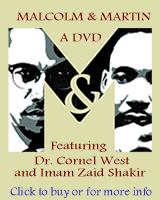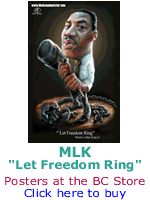
|
|||||||||||||||||||||
 |
|||||||||||||||||||||
 |
|||||||||||||||||||||
 |
|||||||||||||||||||||
 |
|
|
I first fell in love with Washington, D.C. in the mid ‘80s while a student at Howard University. Then, as in now, it was a vibrant place. The majesty of the monuments and museums, the amalgamation of diverse cultures, and the ever-present hum of political activity made it one great town for a young college student. However, I was most taken by the fact that it was a decidedly African American city, and I don’t mean that at the exclusion of anyone. You just got the feeling as you walked the streets or rode the metro that Black folk were making things happen. And in many regards, this remains true today. Now when I visit the city from my current hometown of Los Angeles, as I did a few weeks ago, I marvel at all the development. Once boarded-up, dilapidated homes are being replaced daily with renovated row houses complete with manicured gardens. Empty lots and abandoned buildings are becoming multi-million dollar condos at a frighteningly quick pace. Starbucks has replaced the nearby 7-Eleven as the must stop for coffee, and strips such as 7th Street near Chinatown and 8th Street in Capitol Hill, among others, now boast more fancy restaurants, cafes and bars than I could’ve imagined 20 years ago.
One thing I also notice during this renaissance is the decreasing number of Black faces in front of those shiny new homes or staring into the laptops inside those omni-present internet cafes. In fact, during my last trip inside the beltway I had a meeting at a really cool cyber-spot called Busboys and Poets in the now revamped 14th and U Street area. On the way there, what struck me most was the crowd of young white urban dwellers bustling to and fro in a neighborhood once anchored almost entirely by the famous Ben’s Chili Bowl eatery and the Lincoln Theatre. The strip now looks more like something out of Greenwich Village in lower New York City – sporting restaurants and nightclubs that rival anything in the District. I even saw a multi-cultural collection of kids playing T-ball nearby, which was a beautiful sight to behold and wholly unheard of for that area when I lived in the city. For the record, this is not race baiting. No one should be knocked, regardless of skin color, for seeing opportunities and moving on them, and ethnically diverse communities should be embraced. My question, however, is this: Are Black people unable to lead the charge of urban revitalization, or unwilling? The quick response is that this is an issue rooted more in economics than race, which, of course, makes sense. Clearly the infusion of well-financed, young white homeowners into these areas fuels an economic boom that ignites growth on a number of levels, transforming once struggling communities into thriving neighborhoods. It’s equally apparent that, in 2006, we still deal with the harsh realities of documented racism in residential and commercial lending, as well as lingering disparities in wealth relative to the white and Black communities. We know the mighty dollar plays a huge role here. But what of the growing Black middle class we are constantly hearing and reading about? According to the Census Bureau and other published reports, the D.C. suburb of Maryland’s Prince George’s County has the highest median income for any majority-Black county in the nation. And we have similar neighborhoods in select areas throughout the country, so this is not an issue particular to Washington, D.C.
Before moving out west, I lived seven years in Brooklyn, NY, in the Fort Greene and Clinton Hill sections to be exact. If you are not familiar, these two adjacent areas, both within shouting distance of Manhattan, have historically been among the hipper communities in the borough. When I lived there in the late 80s and early 90s, this part of Brooklyn was a creative hotbed serving, among things, as home to director Spike Lee’s empire as well as the nerve center for a cross-section of artists, musicians and other like-minded types. It was cool, cultural and decidedly African American. In fact, it rivaled Harlem as the place Black folk went to plug into when they got to New York City. These days, when I return to visit for work and play, I notice the not so subtle changes. The neighborhood is still trendy and fertile for the creative souls among us, and it still beats with a pulse unique in all of Brooklyn, but it is no longer a traditional Black community. The beautiful brownstones that line and help define the area are being increasing filled with young, white families. DeKalb Avenue, the area’s anchor strip, where back in the day you were lucky to get a slice of pizza, deli sandwich or maybe a seat at one of the two Black-owned restaurants, is now home to a dozen joints that serve cuisine from all over the world. You can satisfy your tastes for South African, Thai, Japanese (I’m talking Sushi here) and East Indian food all on the same block, if you are able to dodge the white kid on the skateboard zipping by. And let’s not leave out my current homeport – Los Angeles. That city’s affluent African American areas of Baldwin Hills, View Park and Ladera Heights rest on a hill offering panoramic views of the City of Angels. These areas, and those adjacent to them, have some of the most beautiful homes you could imagine, with meticulously landscaped lawns adorning tree-lined streets.
Again, the question here isn’t whether or not white folk should move on these opportunities; it goes without saying that they or any other capable group should. The issue is whether or not African Americans are willing or able to do the same. If not to an equal degree, than to whatever degree we can. We should not bemoan revitalization, but endeavor to be a part of it. Not long ago, actor/comedian Bill Cosby suggested that the so-called African American underclass was not doing its part to move us forward (whatever the hell that meant). In that vein, I suggest that the ever growing Black middleclass step-up to the plate as well. Let’s start ensuring that we are a part of our communities’ revitalizations, and stop complaining when it happens without us. Also, I realize this column is long on problems and short on solutions, and it does not string together all those detailed stats on gentrification, bank loans, tax incentives and shifts in urban flight that serve to help explain this issue. We have scholars and social economists for that, and I know it will require much greater minds than my own to figure out the exact efforts we should undertake here. But a couple of good first steps are to support Black businesses wherever they are now, and to think about our own community when contemplating opening a service or retail establishment, or buying a house or apartment building. As the current trend so clearly teaches us, even the most underserved neighborhoods can turn; the question is can we figure out a way to turn with them. Christopher D. Cathcart is president/founder of OneDiaspora Group, a media consulting company in Los Angeles. He is also an acclaimed public speaker, and has written a book on volunteering and mentoring titled “The Lost Art of Giving Back.” For more information, email [email protected] or visit OneDiaspora Group.com. © 2006 Christopher D. Cathcart. All Rights Reserved |
|
| Home | |
Your comments are always welcome. Visit the Contact Us page to send e-Mail or Feedback or Click here to send e-Mail to [email protected] e-Mail re-print notice
If you send us an e-Mail message we may publish all or part of it, unless you tell us it is not for publication. You may also request that we withhold your name. Thank you very much for your readership. |
|
| September 7, 2006 Issue 196 |
||||||||||||||
|
||||||||||||||
|
||||||||||||||
| Printer Friendly Version in resizeable plain text format | ||||||||||||||
 |
||||||||||||||
 |
||||||||||||||
 |
||||||||||||||
 |
||||||||||||||
| |
||||||||||||||
| |
||||||||||||||





























